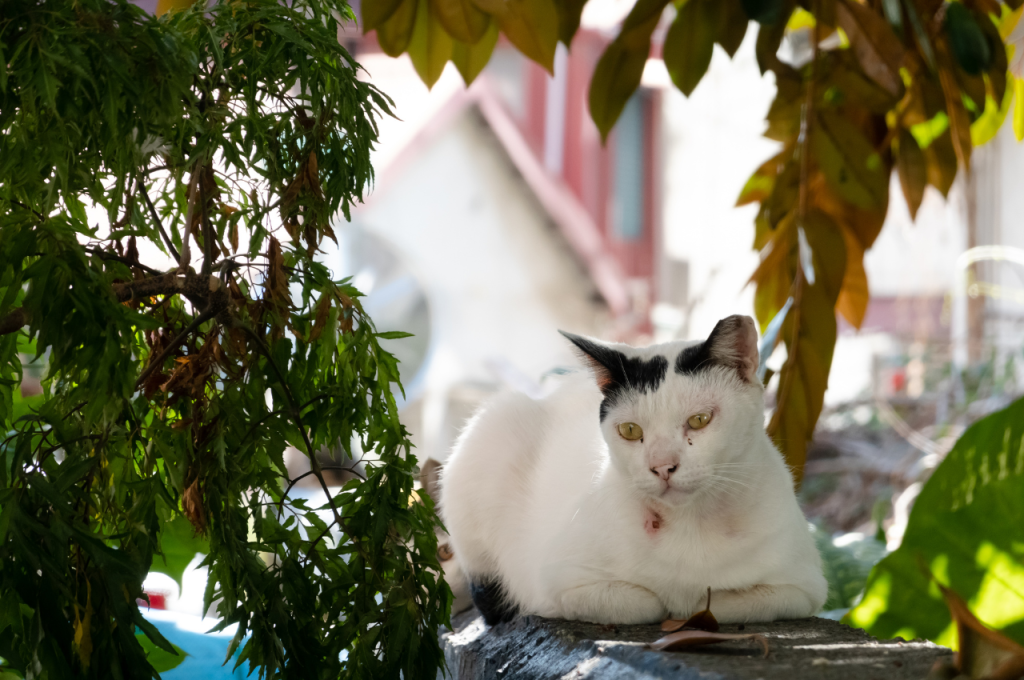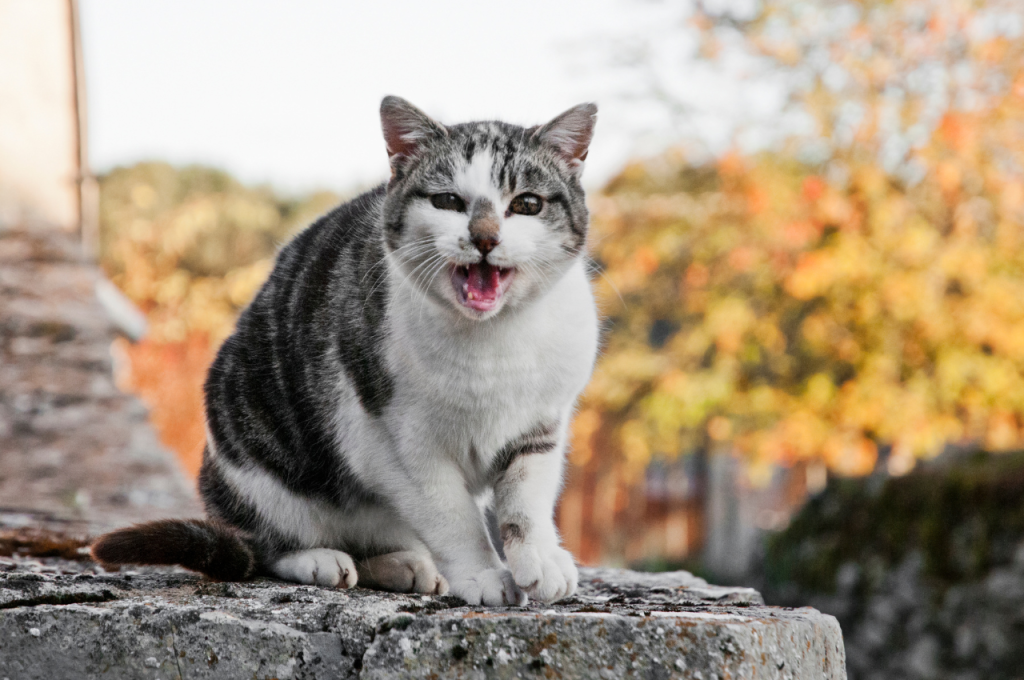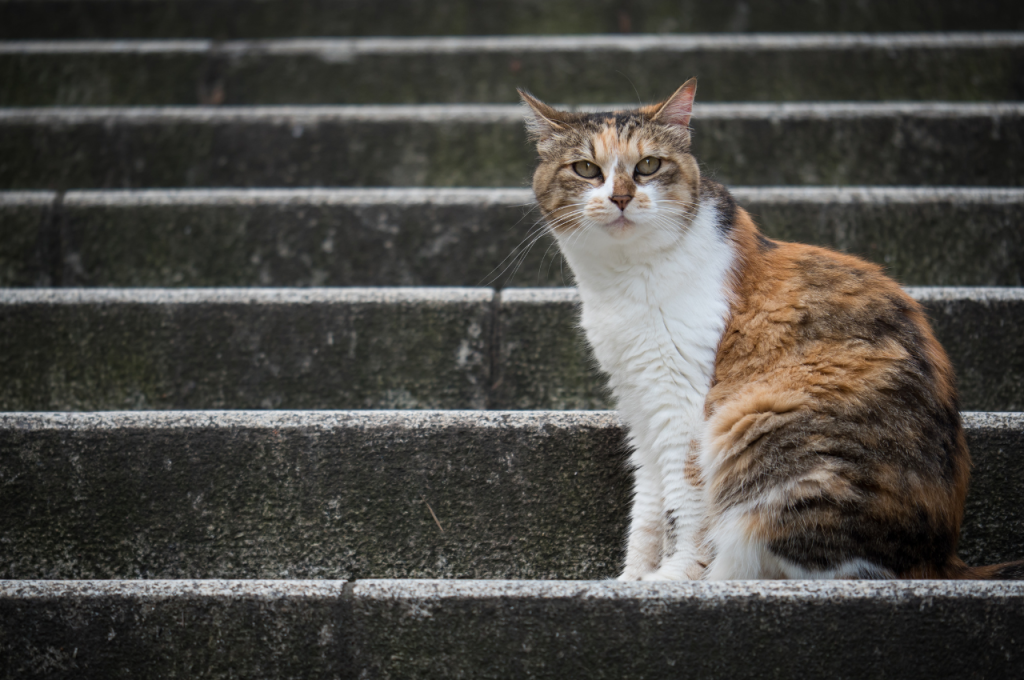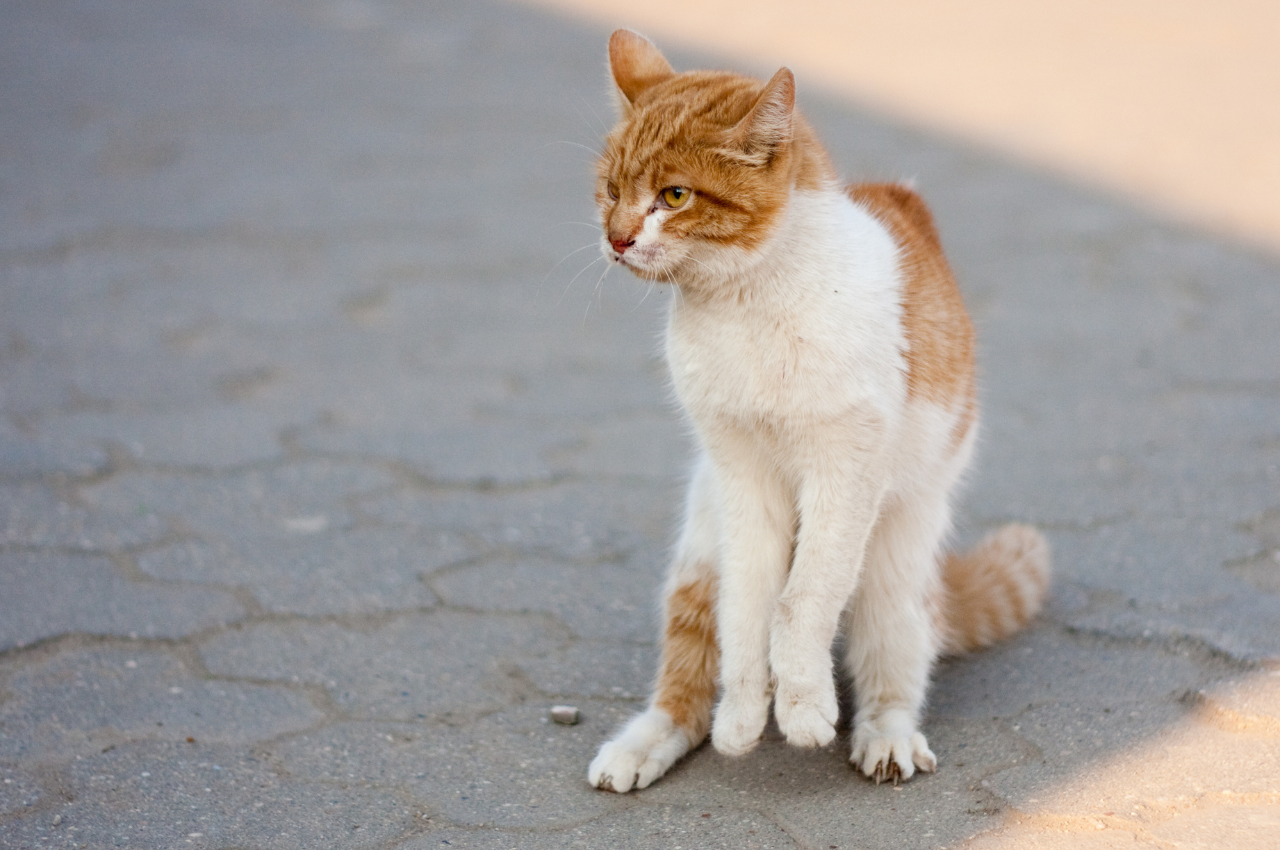Cat strange behavior symptoms may include excessive grooming, hiding, aggression, or changes in appetite and litter box habits. These signs can indicate underlying health issues, stress, or environmental changes affecting your feline friend.
Understanding these behaviors can help you address any potential concerns early on and ensure your cat’s well-being. If you notice any unusual or persistent behavioral changes in your cat, it’s important to consult with a veterinarian for proper evaluation and treatment. By being observant and proactive, you can help your cat lead a happy and healthy life.
Introduction to Feline Quirks
Explore the intriguing world of feline quirks, shedding light on cat strange behavior symptoms. Unravel the mysteries behind their unique antics and decode the signals they exhibit through their peculiar actions. Delve into the fascinating realm of cat behavior and gain insights into understanding your feline companion better.

The Importance of Early Detection
In the world of our feline friends, quirks and behaviors can range from endearing to downright puzzling. Understanding these behaviors is key to a happy and healthy relationship with your cat.
Decoding Normal Vs. Abnormal Behavior
Feline quirks can be normal, like kneading or purring, or abnormal, such as excessive hiding or sudden aggression. Observing these behaviors can help you differentiate between the two.
The Importance of Early Detection
Early detection of abnormal behavior is crucial in identifying potential health issues or stress factors in your cat. Regularly monitoring your cat’s behavior can lead to early intervention and treatment if needed.
Common But Bizarre Cat Behaviors Explained
Cats are fascinating creatures, known for their mysterious and sometimes peculiar behaviors. From sudden bursts of energy to chattering at birds, these common but bizarre behaviors often leave cat owners both amused and puzzled. Understanding the reasons behind these behaviors can help you better connect with your feline friend and provide them with the care they need. In this article, we’ll explore two such behaviors: Zoomies: Sudden Bursts of Energy and Chattering at Birds: A Hunting Instinct.
Zoomies: Sudden Bursts of Energy
Have you ever witnessed your cat dashing around the house at lightning speed, leaping from one piece of furniture to another? This behavior, often referred to as the “Zoomies,” is a common occurrence among cats. During these episodes, your cat may exhibit erratic movements, running, jumping, and spinning in circles.
The Zoomies are typically seen in young cats or kittens, but even adult cats can engage in this playful behavior. These bursts of energy are completely normal and serve as a way for cats to release pent-up energy and express their natural hunting instincts.
There are several reasons why cats experience the Zoomies:
- Exercise and Play: Cats are highly active animals, and the Zoomies provide them with an opportunity to burn off excess energy. It’s their way of exercising and engaging in play.
- Stress Relief: Cats may also experience the Zoomies as a means of relieving stress or anxiety. Running and playing can help them release tension and feel more relaxed.
- Territory Marking: The sudden bursts of energy can also be a way for cats to mark their territory. By racing around their living space, they are essentially claiming it as their own.
If your cat frequently exhibits the Zoomies, it’s important to ensure they have sufficient outlets for exercise and play. Providing them with interactive toys, scratching posts, and regular playtime sessions can help keep their energy levels in check.
Chattering at Birds: a Hunting Instinct
Another behavior that often puzzles cat owners is the chattering or chirping sound cats make when they spot birds outside a window. This behavior is a manifestation of their natural hunting instinct and is thought to be a combination of excitement, anticipation, and frustration.
When a cat sees a bird or other prey animal, their predatory instincts kick in, and they may start chattering or making clicking sounds. This behavior is believed to be an instinctual response, mimicking the sounds a cat would make while hunting and capturing prey in the wild.
There are a few theories as to why cats make these chattering sounds:
- Excitement: Cats may be so excited by the sight of potential prey that they cannot help but vocalize their anticipation and eagerness.
- Frustration: Chattering may also be a result of the cat’s frustration at being unable to reach and capture the bird. The sounds they make may be a way of expressing their desire to hunt.
- Communication: Some experts believe that the chattering sounds cats make are a form of communication, either to signal their presence to the bird or to coordinate with other cats in the area.
While it may be tempting to open the window and let your cat have a go at the birds, it’s essential to remember that outdoor birds can carry diseases and parasites that could harm your cat. Instead, consider providing your cat with interactive toys or bird-watching perches near windows, allowing them to engage in their hunting instincts safely.
Understanding these common but bizarre behaviors can help you appreciate your cat’s unique personality and instincts. By providing them with outlets for play, exercise, and mental stimulation, you can ensure they lead a happy and fulfilled life.
Red Flags in Cat Behavior
Identifying cat strange behavior symptoms is crucial for pet owners to ensure their cat’s health and well-being. Red flags in cat behavior include sudden aggression, excessive hiding, changes in appetite, or unusual vocalizations.
These symptoms may indicate underlying medical issues, stress, or environmental changes affecting your cat. If you notice these behaviors, it is essential to consult a veterinarian promptly. Early detection and intervention can address potential health problems and help maintain your cat’s quality of life. Understanding these signs allows you to respond effectively, ensuring your feline friend remains healthy and happy.
Uncharacteristic Aggression
Cats are generally known for their independent and aloof nature, but sudden aggression can be a cause for concern. If your typically docile feline companion starts displaying uncharacteristic aggression, it could be indicative of an underlying issue. This may manifest in the form of hissing, swatting, or even biting without provocation. Identifying the root cause of this behavior is essential for the well-being of both the cat and its human family.
Sudden Lethargy or Lack of Appetite
Lethargy and a lack of appetite are not uncommon in cats, especially as they age. However, a sudden onset of these symptoms can be a red flag for potential health problems. If your normally playful and active cat becomes unusually lethargic or displays a significant decrease in appetite, it could be a sign of an underlying medical issue that requires prompt attention. Monitoring these changes closely and seeking veterinary advice is crucial to ensure your cat’s well-being.
Medical Conditions Mimicking Strange Behavior
Cat strange behavior symptoms can sometimes be caused by underlying medical conditions. These conditions can mimic unusual behavior in cats, such as excessive meowing, aggression, or hiding. It is important to consider these possibilities and consult with a veterinarian to ensure proper diagnosis and treatment.

Medical Conditions Mimicking Strange Behavior Cats are known for their unique behaviors, but sometimes their actions can be puzzling and indicate an underlying medical condition. It’s important for cat owners to be aware of these strange behaviors and understand that they may be a sign of a more serious issue. In this section, we will explore two medical conditions that can mimic strange behavior in cats: hyperthyroidism and cognitive dysfunction in senior cats.
Hyperthyroidism Symptoms
Hyperthyroidism is a common condition in older cats where the thyroid gland produces an excess of thyroid hormones. This can lead to a range of unusual behaviors that may initially seem unrelated. Some common symptoms of hyperthyroidism in cats include:
- Weight loss despite a good appetite
- Increased thirst and urination
- Restlessness and hyperactivity
- Aggression or irritability
- Poor coat condition
- Vomiting or diarrhea
If your cat is displaying any of these symptoms, it’s essential to consult a veterinarian for a proper diagnosis. Hyperthyroidism can be managed through medication, dietary changes, or even surgery in severe cases.
Cognitive Dysfunction in Senior Cats
Just like humans, cats can experience cognitive decline as they age. Known as cognitive dysfunction syndrome (CDS), this condition can lead to strange behaviors that may be mistaken for normal aging or simply “acting weird.” Some common symptoms of cognitive dysfunction in senior cats include:
- Increased confusion or disorientation
- Changes in sleep patterns
- Loss of litter box training
- Excessive vocalization
- Decreased grooming
- Altered social behavior
It’s important to note that these behaviors may also be signs of other medical conditions, so it’s crucial to consult a veterinarian for an accurate diagnosis. While there is no cure for cognitive dysfunction in cats, there are strategies and treatments available to manage the symptoms and improve your cat’s quality of life. Understanding these medical conditions that can mimic strange behavior in cats is vital for cat owners.
By being aware of the symptoms and seeking veterinary care promptly, you can ensure your furry friend receives the appropriate treatment and support they need. Remember, a happy and healthy cat is a joy to have around!
Behavioral Disorders in Felines
Cats, like humans, can experience various behavioral disorders that may affect their well-being and quality of life. Understanding these conditions is crucial for providing proper care and support to our feline companions.
Separtion Anxiety in Cats
Separation anxiety in cats can manifest through excessive meowing, destructive behavior, or inappropriate urination when left alone. This condition can cause distress and discomfort to the cat.
Obsessive-compulsive Disorder (ocd)
Obsessive-Compulsive Disorder (OCD) in cats may involve repetitive behaviors like excessive grooming, pacing, or chasing shadows. It is essential to identify and address the triggers for such behaviors.
The Role of Stress in Behavioral Changes
Stress can lead to behavioral changes in cats, such as hiding, aggression, or excessive grooming. These symptoms are signs of underlying stress and should be addressed to improve the cat’s well-being. Understanding the role of stress in these behaviors is crucial for providing the right care for your feline companion.
Cats are known for their peculiar behavior, but when they start behaving abnormally, it may be an indication that something is not right. Stress can cause behavioral changes in cats, and it’s important to identify the triggers to help your furry friend manage their stress levels effectively. In this article, we will discuss the symptoms of cat strange behavior and delve into the role of stress in causing behavioral changes.
Identifying Stress Triggers
Identifying the triggers of stress in cats is crucial in managing their behavioral changes. Some common stress triggers in cats include changes in routine, such as feeding or litter box schedules, loud noises, new pets, or visitors in the house. It’s essential to monitor your cat’s behavior and take note of any changes in their environment that may be causing them stress.
Creating a Calm Environment
Creating a calm environment for your cat can help reduce stress levels and prevent abnormal behavior. Ensure that your cat has a quiet and comfortable space to retreat to when they feel overwhelmed. Provide them with toys and scratching posts to keep them occupied and mentally stimulated. You can also use pheromone sprays or diffusers to help your cat relax and feel calm. Stress can cause behavioral changes in cats, and it’s essential to identify the triggers and create a calm environment to manage their stress levels effectively.
By monitoring your cat’s behavior and providing a safe and comfortable space, you can help them cope with stress and prevent abnormal behavior.
Professional Help: When to Consult a Vet
Cats, like humans, can exhibit strange behaviors that may indicate underlying health or psychological issues. While some odd behaviors are normal for felines, others may signal a need for professional help. Understanding when to consult a vet is crucial in ensuring your cat’s well-being.
Routine Check-ups Vs. Emergency Visits
Regular check-ups are essential to monitor your cat’s overall health and catch any potential issues early. However, there are certain behaviors that warrant an emergency visit to the vet. These include sudden changes in behavior, loss of appetite, excessive hiding, or any signs of physical distress. It’s important to be vigilant and seek immediate help when these symptoms arise.
Behavioral Therapists for Cats
Behavioral therapists specialize in addressing psychological issues in animals, including cats. If your feline friend is displaying consistent strange behaviors, such as aggression, excessive grooming, or anxiety, consulting a behavioral therapist may be beneficial. These professionals can help identify the underlying causes and provide tailored solutions to improve your cat’s mental well-being.
Preventive Measures and Home Remedies
Understanding and addressing your cat’s strange behavior symptoms is crucial for their well-being. In addition to seeking veterinary advice, there are several preventive measures and home remedies that can help alleviate and manage these behaviors. By incorporating these strategies into your cat’s routine, you can create a harmonious and enriching environment for your feline friend.
Diet and Exercise
Diet plays a key role in managing your cat’s behavior. Ensure they are receiving a balanced and nutritious diet, rich in essential nutrients. Regular exercise is also vital for maintaining their physical and mental well-being. Encourage interactive play sessions and provide opportunities for physical activity to keep your cat engaged and stimulated.
Interactive Play and Enrichment
Interactive play is essential for addressing strange behavior symptoms in cats. Engage your cat in stimulating activities such as puzzle toys, feather wands, and interactive feeding devices to keep them mentally active. Create an enriching environment by offering scratching posts, climbing structures, and cozy hiding spots to satisfy their natural instincts.
A Healthy Cat is a Happy Cat
A healthy cat is a happy cat. Understanding and recognizing the strange behavior symptoms of your cat is crucial for their overall well-being. By addressing these symptoms, you can ensure your feline friend’s health and happiness.

Summarizing Key Takeaways
After discussing the various strange behaviors that cats exhibit, it’s important to remember the key takeaways. If your cat displays any of these symptoms, it’s important to monitor their behavior and consult with a veterinarian if necessary. Remember:
- Cats may exhibit strange behaviors due to a variety of reasons including stress, illness, and boredom
- Behavioral changes that persist over time may indicate an underlying medical condition
- Proper nutrition, exercise, and mental stimulation can help prevent strange behaviors in cats
Encouragement for Proactive Pet Care
As a cat owner, it’s important to take proactive steps to ensure your furry friend stays healthy and happy. This includes providing proper nutrition, regular exercise, and mental stimulation. Additionally, it’s important to monitor your cat’s behavior and seek veterinary care if you notice any unusual symptoms or changes. By being proactive in your pet care, you can help ensure your cat stays healthy and happy for years to come.
In conclusion, a healthy cat is a happy cat. By understanding the strange behaviors that cats exhibit and taking proactive steps to promote their health and wellbeing, you can help ensure your feline friend lives a long and happy life. Remember to monitor your cat’s behavior and seek veterinary care if necessary, and enjoy the many joys of being a cat owner.
Conclusion
Being aware of your cat’s strange behavior symptoms is crucial for their well-being. By recognizing and understanding these signs, you can provide the necessary care and attention to your feline friend. Keep an eye out for any unusual behaviors and consult with a veterinarian if needed.
